Related Research Articles
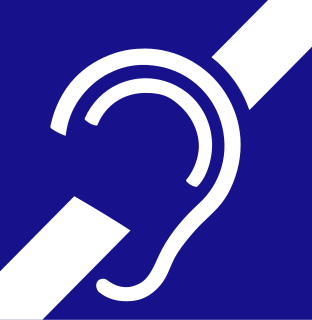
Hearing loss is a partial or total inability to hear. Hearing loss may be present at birth or acquired at any time afterwards. Hearing loss may occur in one or both ears. In children, hearing problems can affect the ability to acquire spoken language, and in adults it can create difficulties with social interaction and at work. Hearing loss can be temporary or permanent. Hearing loss related to age usually affects both ears and is due to cochlear hair cell loss. In some people, particularly older people, hearing loss can result in loneliness. Deaf people usually have little to no hearing.

A veterinarian (vet), also known as a veterinary surgeon or veterinary physician, is a medical professional who practices veterinary medicine. They manage a wide range of health conditions and injuries in non-human animals. Along with this, vets also play a role in animal reproduction, animal health management, conservation, husbandry and breeding and preventive medicine like animal nutrition, vaccination and parasitic control as well as biosecurity and zoonotic disease surveillance and prevention.
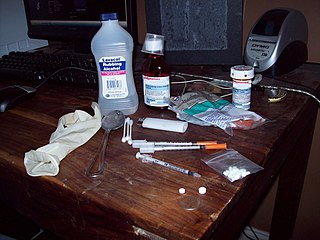
A blood-borne disease is a disease that can be spread through contamination by blood and other body fluids. Blood can contain pathogens of various types, chief among which are microorganisms, like bacteria and parasites, and non-living infectious agents such as viruses. Three blood-borne pathogens in particular, all viruses, are cited as of primary concern to health workers by the CDC-NIOSH: HIV, hepatitis B (HVB), & hepatitis C (HVC).

An occupational injury is bodily damage resulting from working. The most common organs involved are the spine, hands, the head, lungs, eyes, skeleton, and skin. Occupational injuries can result from exposure to occupational hazards, such as temperature, noise, insect or animal bites, blood-borne pathogens, aerosols, hazardous chemicals, radiation, and occupational burnout.

The National Institute for Occupational Safety and Health is the United States federal agency responsible for conducting research and making recommendations for the prevention of work-related injury and illness. NIOSH is part of the Centers for Disease Control and Prevention (CDC) within the U.S. Department of Health and Human Services. Despite its name, it is not part of the National Institutes of Health. Its current director is John Howard.
Construction site safety is an aspect of construction-related activities concerned with protecting construction site workers and others from death, injury, disease or other health-related risks. Construction is an often hazardous, predominantly land-based activity where site workers may be exposed to various risks, some of which remain unrecognized. Site risks can include working at height, moving machinery and materials, power tools and electrical equipment, hazardous substances, plus the effects of excessive noise, dust and vibration. The leading causes of construction site fatalities are falls, electrocutions, crush injuries, and caught-between injuries.

Alice Hamilton was an American physician, research scientist, and author. She was a leading expert in the field of occupational health and a pioneer in the field of industrial toxicology.
An occupational disease is any chronic ailment that occurs as a result of work or occupational activity. It is an aspect of occupational safety and health. An occupational disease is typically identified when it is shown that it is more prevalent in a given body of workers than in the general population, or in other worker populations. The first such disease to be recognised, squamous-cell carcinoma of the scrotum, was identified in chimney sweep boys by Sir Percival Pott in 1775. Occupational hazards that are of a traumatic nature are not considered to be occupational diseases.

A needlestick injury is the penetration of the skin by a hypodermic needle or other sharp object that has been in contact with blood, tissue or other body fluids before the exposure. Even though the acute physiological effects of a needlestick injury are generally negligible, these injuries can lead to transmission of blood-borne diseases, placing those exposed at increased risk of infection from disease-causing pathogens, such as the hepatitis B virus (HBV), hepatitis C virus (HCV), and human immunodeficiency virus (HIV). Among healthcare workers and laboratory personnel worldwide, more than 25 blood-borne virus infections have been reported to have been caused by needlestick injuries. In addition to needlestick injuries, transmission of these viruses can also occur as a result of contamination of the mucous membranes, such as those of the eyes, with blood or body fluids, but needlestick injuries make up more than 80% of all percutaneous exposure incidents in the United States. Various other occupations are also at increased risk of needlestick injury, including law enforcement, laborers, tattoo artists, food preparers, and agricultural workers.

One use of the concept of biocontainment is related to laboratory biosafety and pertains to microbiology laboratories in which the physical containment of pathogenic organisms or agents is required, usually by isolation in environmentally and biologically secure cabinets or rooms, to prevent accidental infection of workers or release into the surrounding community during scientific research.

An occupational hazard is a hazard experienced in the workplace. This encompasses many types of hazards, including chemical hazards, biological hazards (biohazards), psychosocial hazards, and physical hazards. In the United States, the National Institute for Occupational Safety and Health (NIOSH) conduct workplace investigations and research addressing workplace health and safety hazards resulting in guidelines. The Occupational Safety and Health Administration (OSHA) establishes enforceable standards to prevent workplace injuries and illnesses. In the EU, a similar role is taken by EU-OSHA.
Occupational medicine, until 1960 called industrial medicine, is the branch of medicine which is concerned with the maintenance of health in the workplace, including prevention and treatment of diseases and injuries, with secondary objectives of maintaining and increasing productivity and social adjustment in the workplace.

In health care facilities, isolation represents one of several measures that can be taken to implement in infection control: the prevention of communicable diseases from being transmitted from a patient to other patients, health care workers, and visitors, or from outsiders to a particular patient. Various forms of isolation exist, in some of which contact procedures are modified, and others in which the patient is kept away from all other people. In a system devised, and periodically revised, by the U.S. Centers for Disease Control and Prevention (CDC), various levels of patient isolation comprise application of one or more formally described "precaution".
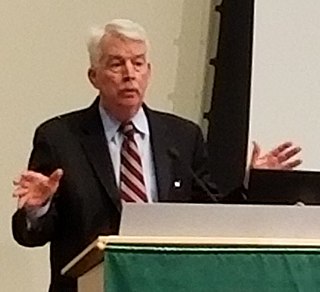
Philip John Landrigan, is an American epidemiologist and pediatrician and one of the world's leading advocates of children's health.
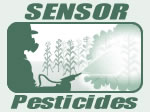
Sentinel Event Notification System for Occupational Risks (SENSOR)-Pesticides is a U.S. state-based surveillance program that monitors pesticide-related illness and injury. It is administered by the National Institute for Occupational Safety and Health (NIOSH), twelve state health agencies participate. NIOSH provides technical support to all participating states. It also provides funding to some states, in conjunction with the US Environmental Protection Agency.
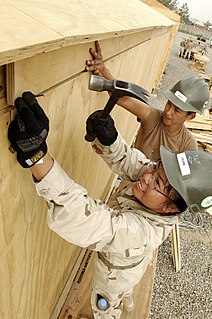
A physical hazard is an agent, factor or circumstance that can cause harm with contact. They can be classified as type of occupational hazard or environmental hazard. Physical hazards include ergonomic hazards, radiation, heat and cold stress, vibration hazards, and noise hazards. Engineering controls are often used to mitigate physical hazards.

A safety syringe is a syringe with a built-in safety mechanism to reduce the risk of needlestick injuries to healthcare workers and others. The needle on a safety syringe can be detachable or permanently attached. On some models, a sheath is placed over the needle, whereas in others the needle retracts into the barrel. Safety needles serve the same functions as safety syringes, but the protective mechanism is a part of the needle rather than the syringe. Legislation requiring safety syringes or equivalents has been introduced in many nations since needlestick injuries and re-use prevention became the focus of governments and safety bodies.

Occupational safety and health (OSH), also commonly referred to as occupational health and safety (OHS), occupational health, or occupational safety, is a multidisciplinary field concerned with the safety, health, and welfare of people at work. These terms also refer to the goals of this field, so their use in the sense of this article was originally an abbreviation of occupational safety and health program/department etc.
David A. Sleet is an American scientist recognized for championing the application of behavioral science to unintentional injury prevention and helping to establish injury prevention as a global public health concern. He has published hundreds of articles and book chapters and was co-editor of the Handbook of Injury and Violence Prevention.; Injury and Violence Prevention: Behavioral Science Theories; Derryberry’s Educating for Health; and the international prize-winning World Report on Road Traffic Injury Prevention.
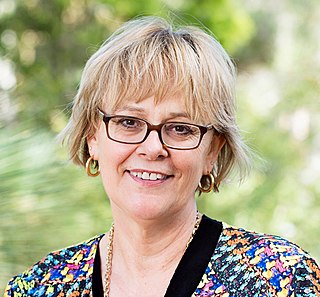
Caroline Finch AO is an Australian sports injury epidemiologist and sports injury prevention researcher. Her research has been adopted and used to directly inform safety policy by Government Departments of Sport and Health, health promotion and injury prevention agencies, and peak sports bodies both within Australia and internationally. Her injury prevention research has been applied to falls in older people, road safety, workplace safety and injuries in children.
References
- ↑ "The Center for Global Health — School of Medicine at the University of Virginia". Archived from the original on 2012-08-03. Retrieved 2010-04-18.
- ↑ "Janine Jagger wins "genius" award: 09-27-2002". www.virginia.edu. Archived from the original on 2002-12-21.
- ↑ While We Were Sleeping: Success Stories in Injury and Violence Prevention, David Hemenway, University of California Press, 2009, ISBN 978-0-520-25845-7